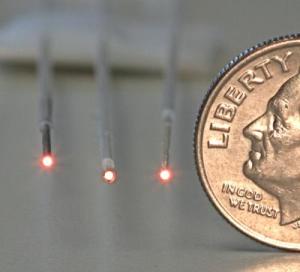A team of researchers at the University of California, San Diego and Tyco Electronics have developed a nano-sensor that could warn emergency workers when their respirators have become saturated with toxic fumes.
 UCSD’s Porous photonic crystal microsensor particles on the ends of optical fibers can detect organic pollutants
UCSD’s Porous photonic crystal microsensor particles on the ends of optical fibers can detect organic pollutants
The research paper was recently released in the Advanced Materials, and describes the method used to create the carbon nanostructures, and their use as microsensors in volatile organic compounds. First aid personnel protect themselves from carbon fumes, by wearing a gas mask. Airborne toxins adhere to the carbon present in the filter, thus trapping the dangerous particles.
As the filters reach saturation point, chemicals will start flowing through. The respirator then causes irreparable damage by seeming to offer protection. This situation is difficult to discern.
The nano-sensors could deliver enhanced precision in determining carbon levels in the filters, according to team leader Michael Sailor, professor of chemistry and biochemistry and bioengineering at UCSD. The carbon nanofibers possess the same chemical traits as the activated charcoal utilized in respirators, making them equally capable of absorbing organic pollutants.
The team arrayed the nanofibers into photonic crystals that reflected target wavelengths or colors. The sensors are brilliantly colored. The color alters when the nanofibers absorb toxins. The materials are thin, and the sensitive crystals identify chemicals such as toluene at concentrations as minute as one part per million.
The research program has been funded by the National Science Foundation, the Department of Homeland Security, the Natural Sciences and Engineering Research Council of Canada, and TYCO Electronics.
Sopurce: http://www.ucsd.edu